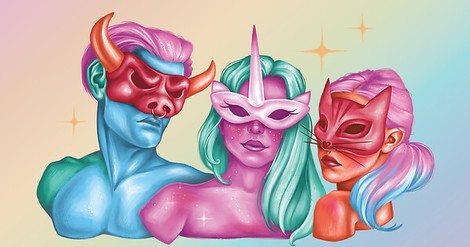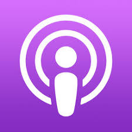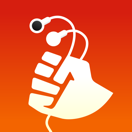sharing is caring
ist wirklich so!
Vielen Dank fürs Teilen!
Kluge Köpfe filtern für dich relevante Beiträge aus dem Netz.
Entdecke handverlesene Artikel, Videos und Audios zu deinen Themen.

Kurator'in für: Fundstücke Pop und Kultur
Geboren in Frankfurt, heute wieder dort lebend und arbeitend - hauptberuflich für einen Sachbuch- und Wissenschaftsverlag, daneben als freie Autorin für Magazine wie Spex, Missy Magazine, Konkret, Die Anschläge, kaput-magazine.com, melodiva.de, culturmag.de.
Modetiere kommen und gehen (z. B. Eule, Waschbär, Fuchs, Faultier, Flamingo), nur das Einhorn bleibt bestehen: Klar, möchte man sofort einwerfen, schließlich hat das gehörnte Pferdchen den uneinholbaren Vorteil, aus dem Reich der Mythen und Märchen zu stammen. Die Faszination von Zauberwesen nutzt sich eben nicht so schnell ab wie der von real-life-Pelz- und Federträgern.
Spätestens seit dem Achtzigerjahre-Kinohit "The Last Unicorn" ist das Einhorn (gern in Kombination mit Regenbogenfarben und Glitzer) eine etablierte Queerness-Ikone, die zudem auch ohne tiefergehende Konnotation auf Kinderklamotten prangen darf. Woher kommt aber die Verehrung für ein Tier, das es doch gar nicht gibt? Und wie wurde das Einhorn überhaupt zum weltweiten Symbol für Gays und Queers? Autor*in s.e. smith liefert auf bitchmedia.org eine umfassende Geschichte des Einhorns, die einerseits popkulturelle Verbindungen aufzeigt:
Unicorns as a symbol of something pure and ethereal also began to meld with imagery of the animal as deeply lonely; they’re not typically depicted in herds, and predominantly seem to live in isolation. Peter S. Beagle’s The Last Unicorn (1968), later adapted into a 1982 feature film, draws heavily on this evolution of the mythos. Tanith Lee’s Black Unicorn (1991) wanders wild and dangerous in the desert before being tamed by, of course, an isolated young girl. In Blade Runner (1982), the infamous unicorn dream sequence shows the mythical beast running wild, free, and alone in police officer Rick Deckard’s (Harrison Ford) mind, presenting a vision of a world far from the capitalism and suffering his character endures, tantalizing him, and the viewer, with something that can never be. The evolution of the unicorn as something far beyond a religious symbol became critical at the close of the 20th century, as the meaning of the word underwent a radical expansion; it became both a mythical creature and a concept, something unreal, impossible, and unattainable, something that possibly doesn’t exist at all. The once-brisk trade in narwhal horns could no longer fool the average consumer.
Smith hat aber auch historisch-mythische Beispiele parat:
The Greeks were especially interested in the unicorn, but their fascination had an intriguing wrinkle: They thought unicorns were real. But descriptions from writers such as Pliny the Elder in his Natural History (77 CE) bear little resemblance to the modern unicorn: “The body of a horse, the head of a stag, the feet of an elephant, the tail of a boar, and a single black horn three feet long in the middle of its forehead,” with a “bellow” for a cry.
Dass die Figur des Einhorns vor (kapitalistischem) Missbrauch nicht gefeit ist, legt smith am Ende ihres Textes dar: Einhörner stehen zwar für queere Bewegungen wie Gay Pride, werden aber auch oft als werbewirksames Maskottchen verwendet:
This sort of unicorn ties itself around rainbow capitalism, the practice of pinkwashing products and corporations with LGBTQ iconography. Some companies are deliberately marketing to the community, while others are attempting to use it as a shield.

Quelle: s.e. smith Bild: (c) Zeke's Lunchbox EN www.bitchmedia.org
Bleib immer informiert! Hier gibt's den Kanal Pop und Kultur als Newsletter.
Einfach die Hörempfehlungen unserer Kurator'innen als Feed in deinem Podcatcher abonnieren. Fertig ist das Ohrenglück!


Öffne deinen Podcast Feed in AntennaPod:
Wenn alles geklappt hat,
kannst du das Fenster schließen.

Öffne deinen Podcast Feed in Apple Podcasts:
Wenn alles geklappt hat,
kannst du das Fenster schließen.

Öffne deinen Podcast Feed in Downcast:
Wenn alles geklappt hat,
kannst du das Fenster schließen.

Öffne deinen Podcast Feed in Instacast:
Wenn alles geklappt hat,
kannst du das Fenster schließen.

Öffne deinen Podcast Feed in Apple Podcasts:
Wenn alles geklappt hat,
kannst du das Fenster schließen.

Öffne deinen Podcast Feed in Podgrasp:
Wenn alles geklappt hat,
kannst du das Fenster schließen.

Bitte kopiere die URL und füge sie in deine
Podcast- oder RSS-APP ein.
Wenn du fertig bist,
kannst du das Fenster schließen.

Öffne deinen Podcast Feed in gpodder.net:
Wenn alles geklappt hat,
kannst du das Fenster schließen.

Öffne deinen Podcast Feed in Pocket Casts:
Wenn alles geklappt hat,
kannst du das Fenster schließen.